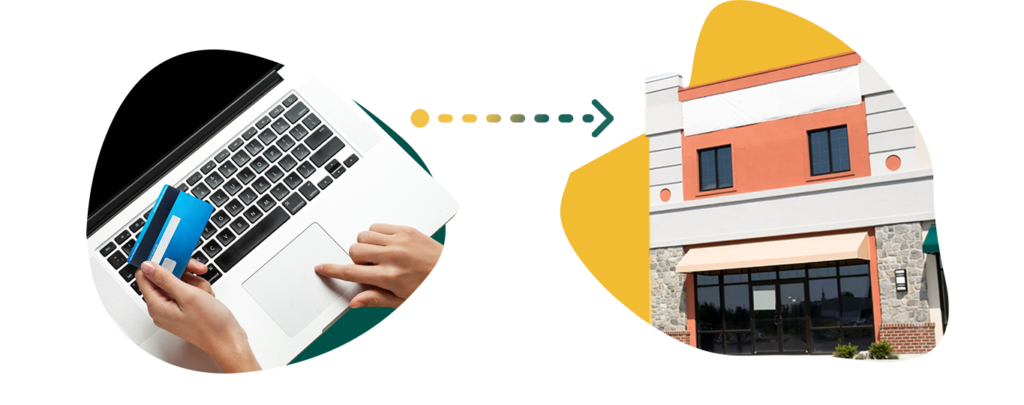
What Is Omnichannel Retail?
Although the word omnichannel is often used in retail, it is a term that is often misunderstood. Here is an explanation of what omnichannel means, how it works, and how it can help you increase your profits.
1. What is a retail sales channel?
Sales channels refer to every different method used by retailers to sell their products to customers. Sales channels go beyond brick & mortar stores. Other sales channels could be events, trade shows, resellers, dealers, curbside pickup, and on-the-go pickup. Additionally, sales channels can also include social media (Facebook, Instagram, Twitter, TikTok), SMS, instant messaging, and even Google Ads.
Most retailers start off selling on a single channel. This can be a physical brick and mortar store or an online only webstore. Prior to the pandemic, an increasing number of retailers have started to add new sales channels to their businesses as shoppers now expect to be able to shop and pre-shop in more than one place.
2. What is omnichannel?
Omnichannel is a fully-integrated retail experience for shoppers. So when omnichannel works, it means customers will have the same experience no matter which sales channel they use. A customer who buys products from a brick & mortar store should have the same experience as one who uses social media channels to buy products. This is the ideal outcome for a successful omnichannel retail business.

What many retailers aren’t as familiar with, is that retailers must use a system that can share sales, inventory, and customer information (data) across all sales channels to be able to offer omnichannel retail. This means handling all store sales and fulfillment of online orders under a single login. In particular, omnichannel systems make store-managed e-commerce such as “buy online pickup in-store” a lot more efficient.
A successful system handles data for sales, inventory and customer information across all brick & mortar stores, online storefronts, ecommerce marketplaces, mobile channels/apps (WhatsApp), and social media commerce (Facebook or Instagram Shop). You should be able to sell to your customers no matter where they shop. In the past, omnichannel systems were expensive and only available to very large retailers. However, today’s modern cloud systems have made it possible for small-to-mid-sized retailers to take advantage of the cost-savings and sales boosting benefits of omnichannel retail.
3. What is the difference between multichannel & omnichannel?
It’s important not to confuse omnichannel with multichannel, despite their similarities. Like omnichannel, multichannel refers to retailers selling to customers through different sales channels. Yet, in a multichannel setup, these channels are not integrated.
Unlike omnichannel, multichannel does not unify the customer experience. And more importantly, multichannel retail costs merchants a lot more money because they need to log into separate tools or channels to manage inventory separately, or see sales and customer history. This is a time-consuming process that can lead to lost sales and errors. It also increases the complexity of your sales and tax management. Additionally, multichannel increases the cost of managing inventory if sales are being fulfilled from the store or the same place.
Multichannel retail costs a lot more money to run because a retailer needs to manage her or his business in separate tools or channels.
4. Why is omnichannel retail important?
Omnichannel selling offers a data-driven approach to retail. As stock levels change, you will want to know the product levels in every channel. A good omnichannel system will do this automatically. This means you will never have to manually manage stockouts. A good omnichannel system will also increase sales by highlighting your best customers across all sales channels. It will focus on faster fulfill of every sale, no matter where the sale originates.
Omnichannel systems are increasingly effective at attracting people to brick & mortar locations. They do this by linking to Google to drive foot traffic to stores based on how close nearby shoppers are to available stock. This increases overall profits by increasing in-store and sales conversion rates.
The goal is a memorable and positive experience for your customers. Omnichannel can make this happen.
TAKU Retail can provide you with a comprehensive and integrated omnichannel strategy that will remove friction between channels. Because TAKU is cloud-based, it can function on any device since it’s not tied to any specific type of hardware. This enables you to use any existing web-enabled devices from desktop computers or tablets to smartphones.
TAKU can not only help you increase sales and reduce operational costs, but it can also help you get in front of shoppers before they even leave their homes. Click below to find out about other ways TAKU Retail can help you achieve a successful omnichannel system for your business.



